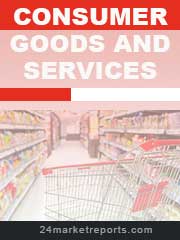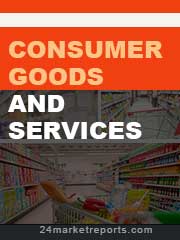
Download FREE Report Sample
Download Free sampleMARKET INSIGHTS
Global paper food packaging bags market size was valued at USD 873 million in 2024. The market is projected to grow from USD 928 million in 2025 to USD 1,278 million by 2032, exhibiting a CAGR of 5.7% during the forecast period.
Paper food packaging bags are sustainable alternatives made from natural fibers (bleached/unbleached) or recycled materials, designed for safe food containment. Unlike plastic variants that may leach chemicals, these bags minimize health risks while meeting stringent food safety regulations. They come in two primary types: handle bags for easy carrying and non-handle bags optimized for bulk packaging.
The market growth is primarily driven by global plastic bans across 130+ countries and rising consumer preference for eco-friendly solutions, with 68% of buyers willing to pay premium for sustainable packaging. The booming online food delivery sector, projected to reach USD 1.2 trillion globally by 2028, further accelerates demand. Key players like WestRock and Mondi Group are expanding production capacities, with Mondi investing EUR 200 million in sustainable packaging solutions in 2023 to capture this growing market.
Global Plastic Ban Policies Accelerate Paper Packaging Adoption
Government regulations worldwide are significantly boosting the paper food packaging bags market, with over 130 countries implementing partial or complete bans on single-use plastics as of 2024. The European Union's Single-Use Plastics Directive, implemented fully in 2021, has created a surge in demand for sustainable alternatives, with paper-based solutions capturing nearly 38% of the former plastic packaging market. In Asia Pacific, India's comprehensive ban on single-use plastics across all states has propelled paper bag demand by 62% year-over-year since 2022. These regulatory shifts create a compelling case for food service operators to transition toward compliant paper packaging solutions.
Food Delivery Boom Expands Addressable Market
To know more about market statistics, Download a FREE Sample copy
The global online food delivery sector, valued at approximately $300 billion in 2024, continues to demonstrate robust 15% annual growth, directly correlating with increased packaging demand. Quick-service restaurants and cloud kitchens now account for 72% of paper food bag purchases in developed markets. Notably, integrating branding capabilities with food-safe paper packaging has created added value, with 68% of consumers reporting better brand recall from customized paper packaging compared to generic plastic alternatives. Major platforms now incentivize eco-friendly packaging adoption through partner programs, further driving market penetration.
Advancements in Barrier Coating Technologies Enhance Performance
Recent innovations in food-grade barrier coatings have addressed historical limitations of paper packaging, with water-based polymer coatings now achieving 96% moisture resistance comparable to traditional plastics. Development of plant-based wax alternatives has expanded the addressable market for hot and greasy food applications by 43% since 2020. These technological improvements have reduced product rejection rates in food service applications from 21% to just 7% over the past three years, making paper bags viable for broader culinary applications including soups, saucy dishes, and fried foods.
Raw Material Price Volatility Impacts Profit Margins
The paper packaging industry faces significant cost pressures from fluctuating pulp prices, which have shown 28% year-over-year volatility since 2021. Supply chain disruptions have compounded this challenge, with containerboard prices increasing by 39% in key markets between 2022-2023. These cost variations make long-term pricing strategies difficult for manufacturers, with many small-to-mid-sized producers operating at sub-15% gross margins. The situation is exacerbated in regions with limited domestic pulp production, where import dependencies create additional logistical challenges and cost burdens.
Performance Limitations in Certain Food Categories
While technological improvements have expanded paper bag applications, significant limitations remain for ultra-high moisture content foods, where leakage rates still average 12% compared to 3% for plastic alternatives. Frozen food applications present particular challenges, with paper solutions showing 18% higher failure rates in low-temperature conditions. These technical constraints maintain plastic's dominance in certain food segments, limiting paper's total addressable market to approximately 65% of all food packaging applications.
Recycling Infrastructure Gaps Limit Sustainability Claims
Despite paper's biodegradability advantages, only 58% of municipalities globally have appropriate collection systems for food-contaminated paper packaging. This creates significant challenges in delivering on sustainability promises, as food residue renders 43% of used paper bags unsuitable for standard recycling streams. The situation is particularly acute in developing markets, where composting facilities remain scarce despite growing paper packaging adoption. Without coordinated investment in waste management infrastructure, the environmental benefits of paper solutions may not be fully realized.
Consumer Education Gaps Hinder Premiumization
Market research indicates 61% of consumers cannot differentiate between various paper quality grades, creating challenges for premium product positioning. Many food operators report difficulty justifying 25-40% price premiums for high-performance paper bags, as customers frequently perceive all paper packaging as functionally equivalent. This education gap limits manufacturers' ability to recoup R&D investments through value-added product offerings, potentially stifling innovation in the long term.
Emerging Bio-Based Materials Open New Innovation Pathways
Recent breakthroughs in agricultural waste utilization present compelling opportunities, with bagasse-based paper products demonstrating 92% of traditional paper's performance at 30% lower material costs. Pilot programs utilizing rice husk and wheat straw fibers show particular promise, with scaling potential that could reduce reliance on wood pulp by up to 40%. These developments align perfectly with circular economy objectives while potentially lowering production costs - a critical factor as raw material expenditures account for 55-65% of total manufacturing expenses.
Smart Packaging Integration Creates Value-Added Solutions
The convergence of paper packaging with digital technologies presents untapped potential, with conductive ink applications enabling temperature monitoring and freshness indicators. Early trials show these solutions can reduce food waste by up to 18% while creating new branding opportunities. QR code integration for traceability and interactive content has demonstrated 73% consumer engagement rates in pilot programs, suggesting strong potential for brand differentiation in a competitive market.
Handle Bags Segment Leads Due to Consumer Preference for Convenience
The market is segmented based on type into:
Handle Bags
Subtypes: Flat handles, Twisted handles, and others
Non-Handle Bags
Subtypes: Flat pouches, Gusseted bags, and others
Multi-Wall Bags
Kraft Paper Bags
Others
Online Food Delivery Segment Shows Rapid Growth Due to Changing Consumer Preferences
The market is segmented based on application into:
Restaurants
Hotels and Lodgings
Food Courts
Online Food Delivery
Others
Recycled Paper Segment Gains Momentum with Increasing Sustainability Focus
The market is segmented based on material into:
Virgin Paper
Recycled Paper
Bleached Paper
Unbleached Paper
Self-Sealing Bags Segment Dominates Due to Hygiene Concerns
The market is segmented based on closure type into:
Self-Sealing Bags
Twist-Tie Bags
Adhesive Seal Bags
Zipper Bags
Others
Companies Expand Sustainable Solutions to Capture Growing Demand for Eco-friendly Packaging
The global paper food packaging bags market features a mix of established multinational corporations and regional specialists, all competing to capitalize on the 5.7% CAGR growth projected through 2032. WestRock Company currently leads the market, leveraging its extensive manufacturing network and investments in recycled fiber technologies. The company's 2023 acquisition of a major European paper bag producer strengthened its position in the foodservice sector, particularly for quick-service restaurants.
Close competitors Mondi Group and Huhtamaki have gained significant traction through product differentiation strategies. Mondi's 2024 launch of moisture-resistant paper bags with bio-based coatings addressed a key industry pain point, while Huhtamaki's compostable bag line captured 12% market share in Europe's online food delivery segment last year. These innovations demonstrate how leading players are moving beyond basic paper solutions to value-added products.
Mid-sized competitors are carving out niches through specialization. Vegware dominates the UK's plant-based restaurant segment with its certified compostable bags, while Colpac has become the preferred supplier for premium bakery chains across Europe. Regional players like Seow Khim Polythelene in Southeast Asia are gaining ground by combining paper bag production with local distribution networks - a strategy that reduced delivery lead times by 40% for food vendors in the region.
The competitive landscape continues to evolve as companies invest in circular economy initiatives. Stora Enso recently partnered with a Nordic grocery chain to implement bag return programs, while Smurfit Kappa developed paper bags with 95% post-consumer recycled content. Such sustainability-focused differentiators are becoming critical as food brands seek packaging that aligns with their ESG commitments.
WestRock Company (U.S.)
Twin Rivers Paper (U.S.)
Mondi Group (U.K.)
Huhtamaki (Finland)
Copious Bags (India)
Detpak (Australia)
Paperbags Limited (U.K.)
Novolex (U.S.)
Colpac (U.K.)
Ronpak (Canada)
Re-Bag (Germany)
Amcor (Australia)
Vegware (U.K.)
Stora Enso (Finland)
Smurfit Kappa (Ireland)
The global paper food packaging bags market is experiencing accelerated growth due to increasing environmental concerns and stringent regulations against single-use plastics. With over 127 countries implementing plastic packaging bans or restrictions as of 2024, food service businesses are rapidly adopting paper alternatives to comply with legislation and meet consumer demand for sustainable solutions. Paper packaging bags offer superior biodegradability compared to conventional plastic variants, decomposing within 2-6 months versus plastic's 20-500 year lifespan. Major quick-service restaurants have committed to full transitions to paper-based packaging by 2025, driving significant upstream demand for kraft paper and grease-resistant treated paper solutions.
E-Commerce Food Delivery Expansion
The explosive growth of online food delivery platforms, projected to surpass $1 trillion in global gross merchandise value by 2027, has created unprecedented demand for durable, transport-optimized paper packaging. Delivery-specific designs featuring reinforced bottoms, heat-sealed seams, and integrated grease barriers now account for 38% of total paper food bag production. Market leaders are innovating with moisture-resistant coatings and vented designs to maintain food quality during extended transit times, particularly for fried and baked goods where product integrity is critical.
Recent developments in cellulose-based barrier coatings have significantly expanded paper packaging's functional capabilities. New formulations incorporating plant-based waxes and bio-polymers provide oil and moisture resistance comparable to plastic laminates while retaining full compostability. These technological improvements enable paper bags to handle high-fat content foods like burgers and fried chicken - applications that previously required plastic liners. Industry testing shows modern barrier-treated paper maintains structural integrity for up to 48 hours with oily foods, addressing a historic limitation that constrained market penetration.
Brand differentiation through packaging aesthetics has emerged as a key competitive strategy, with restaurants investing in customized printing, textured papers, and structural innovations. The premium paper packaging segment is growing at 8.2% annually, nearly double the overall market rate, as operators recognize packaging's role in customer experience and brand perception. High-end quick-service chains are adopting features like dual-ply construction, shaped bottoms for stability, and advanced graphic printing technologies to create Instagram-worthy unboxing moments that reinforce brand identity.
Circular Economy Initiatives
Closed-loop recycling programs are gaining traction, with major manufacturers establishing collection networks to recover used paper packaging for repulping. Leading suppliers now incorporate 30-50% post-consumer recycled content without sacrificing performance, supported by improved de-inking and purification technologies. Several European countries have implemented extended producer responsibility (EPR) schemes that incentivize design-for-recyclability, accelerating development of monomaterial paper solutions that eliminate traditional plastic adhesives and coatings.
While North America and Europe currently dominate paper food bag adoption with 63% combined market share, Asia-Pacific is emerging as the fastest-growing region at 7.3% CAGR through 2030. This growth is fueled by urbanization, rising disposable incomes, and government policies like India's comprehensive single-use plastic ban. Local manufacturers are adapting Western packaging formats to regional culinary needs, developing solutions for liquid-heavy dishes like soups and curries that require specialized barrier properties and spill-resistant closures.
North America
North America holds a significant share in the global paper food packaging bags market, driven by stringent environmental policies and rising consumer preference for sustainable packaging. The U.S. dominates this region, accounting for over 70% of the market share due to widespread bans on single-use plastics across multiple states. Key players like WestRock Company and International Paper are investing in advanced paper-based solutions, including grease-resistant and compostable bags. The rapid expansion of online food delivery services, projected to grow at 15% annually, further propels demand. However, higher production costs compared to plastic alternatives remain a key challenge for manufacturers.
Europe
Europe represents one of the most mature markets for paper food packaging, with strict EU regulations enforcing sustainable packaging across all member states. Germany and France lead the adoption of eco-friendly paper bags, particularly in the quick-service restaurant sector. The region sees increasing innovation in barrier-coated paper solutions that extend food shelf life while maintaining recyclability. Circular economy initiatives are reshaping supply chains, with companies like Mondi Group and Stora Enso developing fully compostable packaging systems. While growth is steady, competition from reusable packaging options presents an emerging market constraint.
Asia-Pacific
The Asia-Pacific region is experiencing the fastest growth in paper food packaging bags, projected at 7.3% CAGR through 2032. China's booming e-commerce food delivery market, handling over 40 billion annual orders, creates massive demand for paper-based solutions. India shows remarkable potential with increasing government bans on plastics, though price sensitivity limits premium product adoption. Southeast Asian countries are gradually transitioning from plastic, supported by multinational brands implementing sustainable packaging policies. While Japan leads in technological innovation for high-barrier paper packaging, inconsistent recycling infrastructure across the region remains a persistent challenge.
South America
South America presents emerging opportunities for paper food packaging, particularly in Brazil and Argentina where urban foodservice markets are expanding. The region benefits from abundant raw material availability, though local manufacturing capacity remains underdeveloped. Consumer awareness of sustainable packaging is growing, with major quick-service chains beginning to replace plastic bags. Economic volatility and inconsistent enforcement of plastic bans currently hinder market potential, but increasing foreign investment in packaging infrastructure signals long-term growth prospects. The market is gradually shifting toward cost-effective laminated paper solutions with moisture resistance.
Middle East & Africa
The MEA region shows nascent but promising growth in paper food packaging, led by UAE and Saudi Arabia where luxury foodservice sectors demand premium packaging solutions. While plastic still dominates lower-value segments, multinational food brands are driving the transition to paper-based alternatives. Africa's market remains largely untapped, though South Africa demonstrates increasing adoption in urban centers. The region faces challenges including limited local production facilities and high import dependence, but governments are beginning to implement plastic reduction policies that will likely accelerate market development in coming years.
This market research report offers a holistic overview of global and regional markets for the forecast period 2025–2032. It presents accurate and actionable insights based on a blend of primary and secondary research.
✅ Market Overview
Global and regional market size (historical & forecast)
Growth trends and value/volume projections
✅ Segmentation Analysis
By product type or category
By application or usage area
By end-user industry
By distribution channel (if applicable)
✅ Regional Insights
North America, Europe, Asia-Pacific, Latin America, Middle East & Africa
Country-level data for key markets
✅ Competitive Landscape
Company profiles and market share analysis
Key strategies: M&A, partnerships, expansions
Product portfolio and pricing strategies
✅ Technology & Innovation
Emerging technologies and R&D trends
Automation, digitalization, sustainability initiatives
Impact of AI, IoT, or other disruptors (where applicable)
✅ Market Dynamics
Key drivers supporting market growth
Restraints and potential risk factors
Supply chain trends and challenges
✅ Opportunities & Recommendations
High-growth segments
Investment hotspots
Strategic suggestions for stakeholders
✅ Stakeholder Insights
Target audience includes manufacturers, suppliers, distributors, investors, regulators, and policymakers
-> Key players include WestRock Company, Mondi Group, Huhtamaki, International Paper, Smurfit Kappa, Amcor, Stora Enso, Novolex, Georgia Pacific, and Twin Rivers Paper, among others.
-> Key growth drivers include government bans on single-use plastics, expansion of foodservice outlets, growth in online food delivery platforms, and increasing consumer preference for sustainable packaging solutions.
-> Asia-Pacific is the fastest-growing region due to rapid urbanization and foodservice industry expansion, while North America remains a mature market with high adoption of eco-friendly packaging.
-> Emerging trends include development of water-resistant paper coatings, increased use of recycled materials, compostable packaging solutions, and smart packaging with QR codes for traceability.

Speak to our Custom Research Team and get the Custom Research in a budget
Custom ResearchFrequently Asked Questions ?
A license granted to one user. Rules or conditions might be applied for e.g. the use of electric files (PDFs) or printings, depending on product.
A license granted to multiple users.
A license granted to a single business site/establishment.
A license granted to all employees within organisation access to the product.
Upto Working 24 to 48 hrs
Upto 72 hrs max - Weekends and Public Holidays
Online Payments with PayPal and CCavenue
Wire Transfer/Bank Transfer
Hard Copy




 Industry Market Size
Industry Market Size SWOT Analysis
SWOT Analysis Industry Major Players
Industry Major Players Revenue Forecasts
Revenue Forecasts Historical and Forecast Growth
Historical and Forecast Growth Profitability Analysis
Profitability Analysis
























